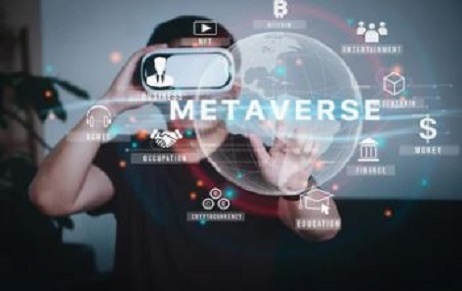Introduction Robert J Thieruf in his book “Virtual Reality Systems for Business” explains Virtual reality…
Stem Cells Unpatentable on destruction of Embryos
On 18 October 2011, the European Court of Justice (ECJ) gave its decision in Brustle v Greenpeace (C-34/10) regarding the patentability of human embryonic stem cells (hESCs) in Europe. This Decision is largely in view with the Opinion of the ECJ Advocate General issued in March this year.
European Court of Justice (ECJ) stated;
“A process which involves removal of a stem cell from a human embryo at the blastocyst stage, causing the destruction of that embryo, cannot be patented.
The use of human embryos for therapeutic or diagnostic purposes which are applied to the human embryo and are useful to it is patentable, but their use for purposes of scientific research is not patentable”.
ECJ issued a judgment in the case of Brustle v Greenpeace e.V (Case C 34/10) in which it prohibits the use of human embryonic stem cells in drug formulation and banned issuing patents for the same:
Background:
An invalidity suit was filed by Greenpeace in 2004, in the German Federal Patent Court against a German patent DE 197568664 assigned to Dr. Oliver Brustle of the University of Bonn. The patent DE 197568664 was filed on 19th December 1997, disclosing a treatment against Parkinson’s disease. The treatment involved the use of embryonic stem cells for five days after fertilization. The product was obtained from embryonic stem cells at the Blastocyst stage of neural progenitor cells, isolated and purified, and was able to fight against Parkinson’s disease.
The ECJ referral originated from an appeal brought by Dr. Oliver Brustle against the decision of the German Federal Patent Court that his patent was invalid.
In Europe, the Biotechnology Directive (98/44/EC) (the Directive) rules out patentability for certain inventions, including “uses of human embryos for industrial or commercial purposes”. Accordingly, the ECJ was asked by the German Federal Court of Justice for its interpretation of the concept of a “human embryo”, which is not defined in the Directive, under European law in order to determine whether Dr. Brustle’s patent should be excluded from patentability.
The European Court of Justice viewed the term ‘’human embryo” in a wide sense. It considered that any human ovum being fertilized, be regarded as a “human embryo” if that fertilization involves the process of development of a human being. The term “human embryo” also covers those artificially stimulated or manipulated (but unfertilized) cells which are capable of multiplying and developing into a human being through parthenogenesis. In general, the development from conception begins with a few totipotent cells, wherein the cell has the capacity to develop into a complete human being. The Court viewed totipotent cells as representing the first stage of the human body and must, therefore, be legally categorized as embryos.
Additionally, the Court felt that it would be wrong to characterize a totipotent cell as an embryo because an embryo quickly develops into a blastocyst made up of pluripotent cells, which further develops into all kinds of cells to form different organs of the human body, as disclosed in the invention covered in Dr. Brustle’s patent.
But Advocate General did not agree that pluripotent embryonic stem cells not regarded as “human embryos” because they do not in themselves have the capacity to develop into a human being, but that inventions relating to pluripotent stem cells can be patentable only if they are not obtained to the detriment of an embryo, whether its destruction or its modification. Article 6(2)(c) of Directive 98/44 must be interpreted as meaning that: “any human ovum after fertilization, any non-fertilized human ovum into which the cell nucleus from a mature human cell has been transplanted, and any non-fertilized human ovum whose division and further development have been stimulated by parthenogenesis constitute a ‘human embryo’”. Hence the Court held that a “human embryo” should be considered from the fertilization stage to the initial totipotent cells and to the entire process of the development and formation of the human body, which includes the blastocyst.
The second objection for patentability of Brutle’s invention was:
“The use of human embryos for therapeutic or diagnostic purposes which are applied to the human embryo and are useful to it is patentable, but their use for purposes of scientific research is not patentable.”
The Court examines whether the concept of ‘uses of human embryos for industrial or commercial purposes’, not patentable, also covers the use of human embryos for purposes of scientific research. The Court notes that the grant of a patent for an invention implies, in principle, its industrial or commercial application. Although the aim of scientific research must be distinguished from industrial or commercial purposes, the use of human embryos for the purposes of research which is the subject-matter of a patent application should not devoid from the scope of patentability. In that regard, the use of human embryos for purposes of scientific research which is the subject-matter of a patent application cannot be distinguished from industrial and commercial use and, thus, avoid exclusion from patentability. Consequently, the Court concludes that scientific research entailing the use of human embryos cannot access the protection of patent law. In addition to it, the Court also points out that the patentability of using human embryos for industrial or commercial purposes is not prohibited under the Directive where it concerns the use for therapeutic or diagnostic purposes.
Finally, the Court answers the third question on the patentability of an invention involving the production of Dr. Brustle’s neural/neurological precursor cells. In this case, a patent specification may not necessarily mention the use of human embryos, however, there is a supposition that firstly, stem cells are obtained from a human embryo at the blastocyst stage and, secondly, that the removal of a stem cell entails the destruction of that embryo. In conclusion, the Court holds that an invention is excluded from patentability where the implementation of the process requires either the prior destruction of human embryos or their prior use as the base material, even if, in the patent application, the description of that process, as in Brüstle case, does not refer to the use of human embryos.
Conclusion
In conclusion, we find that the decision is related to the patentability of products that could be prepared exclusively by a method which involved the destruction of human embryos. In this decision, the German Federal Court decided that if the production of a claimed product necessarily involved the destruction of a human embryo, its patentability was to be denied. However, induced pluripotent cells (iPS cells), which are not obtained by the destruction of a human embryo, appear to remain patentable in Europe.
But finally, it is up to the German Federal Court to decide whether pluripotent stem cells should be excluded from patentability or not, keeping in view the responses given/stated by ECJ. However, if the German Federal Court follows the Opinion of the Advocate General, then it is likely that inventions relating to pluripotent stem cells can be patentable only if they are not obtained to the detriment of an embryo, whether its destruction or its modification.
The ECJ’s ruling also implies other National Courts including India, hearing similar cases in the field of biotechnology. However, due to differences between the laws of the National Courts, it is unlikely that other national courts would follow this ECJ Decision in this area of patent law. Recently, applicants for patents in places such as the countries of India, Japan, Peru, and Brazil have been facing patenting issues in relation to inventions involving human embryonic stem cells (raising morality concerns) and illegally obtained genetic resources. Now considering the present scenario on stem cell patent in India, it has been noted that the Indian Patent Office has granted many patents on embryonic stem cells. In a previous Patent draft manual of 2008, it was stated that embryonic stem cell patents are against public order and morality. But the latest Manual of 2011 on Patent laws does not highlight obligations/rules about stem cell patentability. Hence, in the absence of any such objections or law prohibition on stem cells, it can be considered that India can give way to embryonic stem cells Patentability.
Lastly, in regards to the case of Brustle’s patent, “The International Society for Stem Cell Research” (ISSCR) along with worldwide research scholars, express their views stating that such objections over the patentability of stem cells can adversely affect the development of new therapies from human embryonic stem cell research and related issues of medical research. Scientists urge all countries to permit human embryonic stem cell research conducted under rigorous and transparent ethical oversight to accelerate progress toward understanding disease and identifying new treatments. It has been recognized that protections of intellectual property rights are critical to all branches of medical research including human embryonic stem cell research. The protection of the intellectual property is crucial to the development of techniques, drugs, and devices for the better understanding, detection, and treatment of disease.
About the Author: Ms. Minusmita, Patent Associate at IIPRD and can be reached at [email protected]



